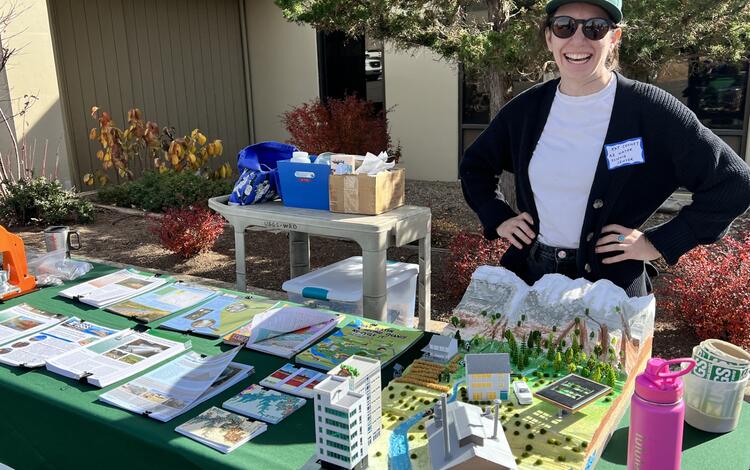Join us on Sept 29 for the USGS Open House in Flagstaff!
Get ready to launch into a day of discovery! Join us on September 29, 2024, from 10 a.m. to 1 p.m. at the USGS campus in Flagstaff, AZ, to explore interactive displays and activities related to geology, geography, biology, hydrology, planetary science, and mapping.
Our address: 2255 N. Gemini Drive, Flagstaff, AZ. We can’t wait to see you there!
Astrogeology Science Center (ASC):
Join the Astrogeology Science Center for engaging talks with experts in the field, family fun, guided tours, demonstrations, and hands on activities, related to planetary science and the exploration of our solar system. Bring your friends and family and connect with fellow space enthusiasts or to learn something new.




Arizona Water Science Center (AzWSC):
The AzWSC's mission is to collect and interpret high quality, impartial scientific information to provide resource managers and the public with the knowledge required to understand and manage the critical water resources of Arizona and the Southwest. Visit us at the USGS Flagstaff Open House to learn more about our work!




The Southwest Biological Science Center (SBSC):
The SBSC conducts quality, objective research on the terrestrial and aquatic systems of the Colorado Plateau, Colorado River and its tributaries, drylands across the Southwest United States, and beyond. Scientists within SBSC’s two Branches, Terrestrial Dryland Ecology and River Ecosystem Science, study biology, ecology, and natural processes to understand the challenges facing western ecosystems. Knowledge gained from research is translated into actionable information that may assist the policy makers, land managers, and practitioners tasked with making decisions about and implementing land and ecosystem management. Visit us at the USGS Flagstaff Open House to learn more about our work!




Geology, Minerals, Energy, Geophysics Science Center (GMEG):
GMEG focuses on a wide variety of subjects encompassing geologic processes, mineral resources, energy potential, and paleoclimate (climate of the past) processes. GMEG's research area primarily covers the western United States. The GMEG group here at the Flagstaff Science Campus predominantly focuses our research on the geologic evolution of the of the Grand Canyon and the greater Colorado River region. This work involves the production of geologic maps and their associated data, such as rock unit ages and chemistry. Visit us at the USGS Flagstaff Open House to learn more about our work!




Get Our News
These items are in the RSS feed format (Really Simple Syndication) based on categories such as topics, locations, and more. You can install and RSS reader browser extension, software, or use a third-party service to receive immediate news updates depending on the feed that you have added. If you click the feed links below, they may look strange because they are simply XML code. An RSS reader can easily read this code and push out a notification to you when something new is posted to our site.

